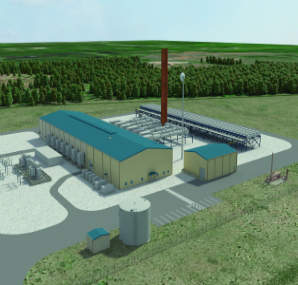Wärtsilä reports it has received full notice to proceed with the delivery of engines for two new power plants being built by investor owned utility Upper Michigan Energy Resources Corporation (UMERC), a subsidiary of WEC Energy Group. The Wärtsilä “smart power generation” concept was selected in order to accommodate a broad range of operating profiles, with flexibility a prime requirement.

Wärtsilä reports it has received full notice to proceed with the delivery of engines for two new power plants being built by investor owned utility Upper Michigan Energy Resources Corporation (UMERC), a subsidiary of WEC Energy Group. The Wärtsilä “smart power generation” concept was selected in order to accommodate a broad range of operating profiles, with flexibility a prime requirement.
The two power plants, located in the Negaunee and Baraga townships in Michigan, will have a combined output of 188 MW, provided by a total of ten Wärtsilä 50SG engines running on natural gas fuel. The plants will serve residential consumers as well as a large mining operation, which creates various generation and balancing needs in the region. The fast starting and responsiveness of the Wärtsilä machines was cited as being an important consideration in the award of the contract.
The Wärtsilä plants will replace an existing coal-fired power plant and are expected to provide baseload and intermittent power. Their ability to react rapidly to the fluctuating demand from the local users was a critical factor for UMERC.
The Wärtsilä engines are scheduled for delivery in the latter half of 2018 and the plants are expected to come on line in 2019.
Another recent “smart power” contract for Wärtsilä in the USA is that to supply ten 50SG gas fuelled engines for a power plant in Arizona.
Tucson Electric Power (TEP), a subsidiary of Fortis Inc, is building the plant on the site of an existing generating station, which consists of both natural gas fired and renewable energy facilities. TEP selected Wärtsilä’s “smart power” technology to address intermittency and other challenges associated with expanding renewables. TEP is aiming to generate at least 30% of its power from renewables by 2030.
Delivery of the Wärtsilä equipment will start in autumn 2018 and the plant will be built in two phases, with half the units coming on line in mid 2019 and the remainder by early 2020.
The Wärtsilä engines will replace two of the existing plant’s older steam units, improving the plant’s overall efficiency. They will also reduce NOx by about 60%. A further benefit is that the engines require minimal amounts of water for cooling.
Wärtsilä currently has an installed base of more than 3000 MW in the USA, while its global installed base exceeds 65 GW in 177 countries.
